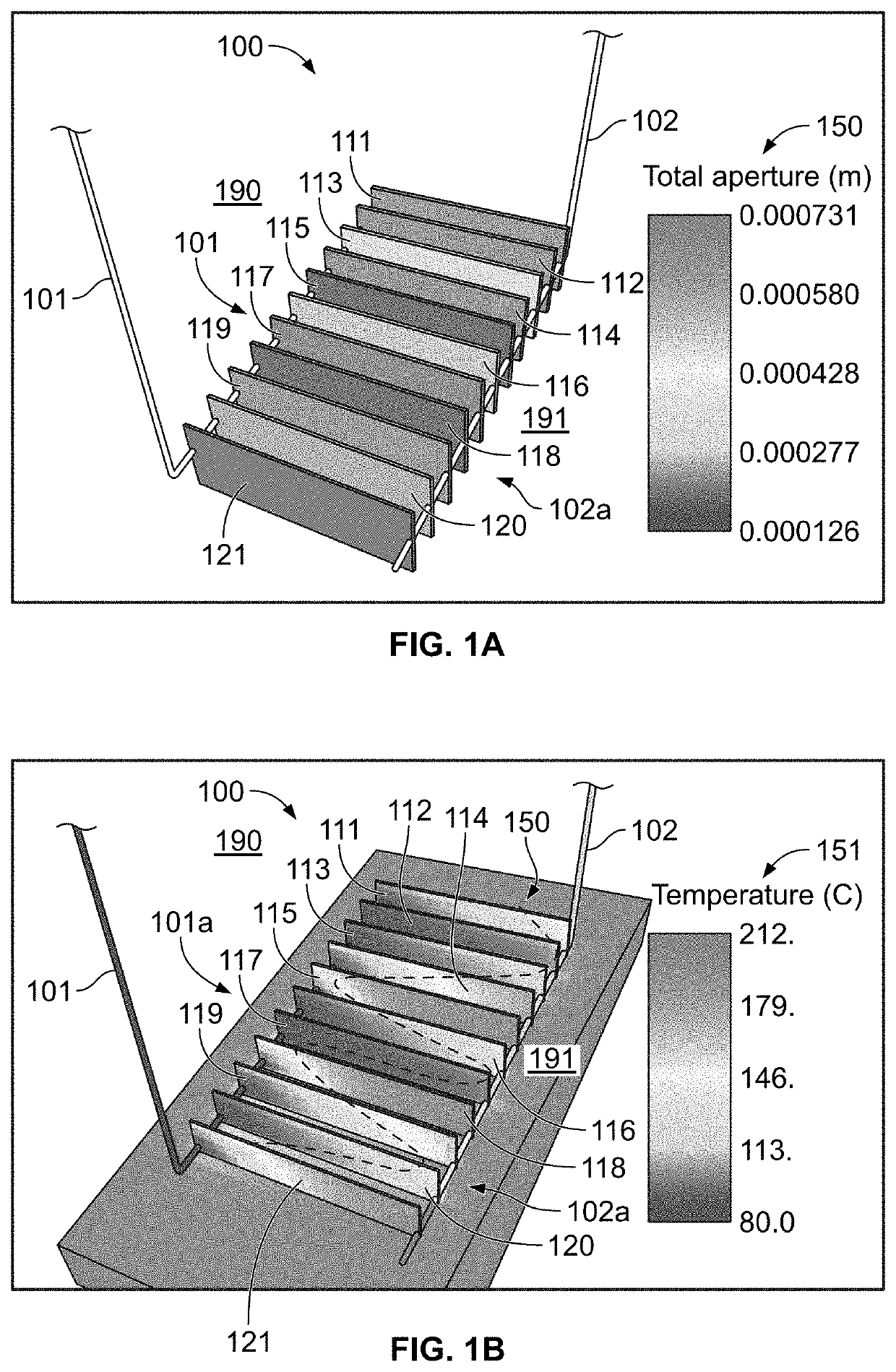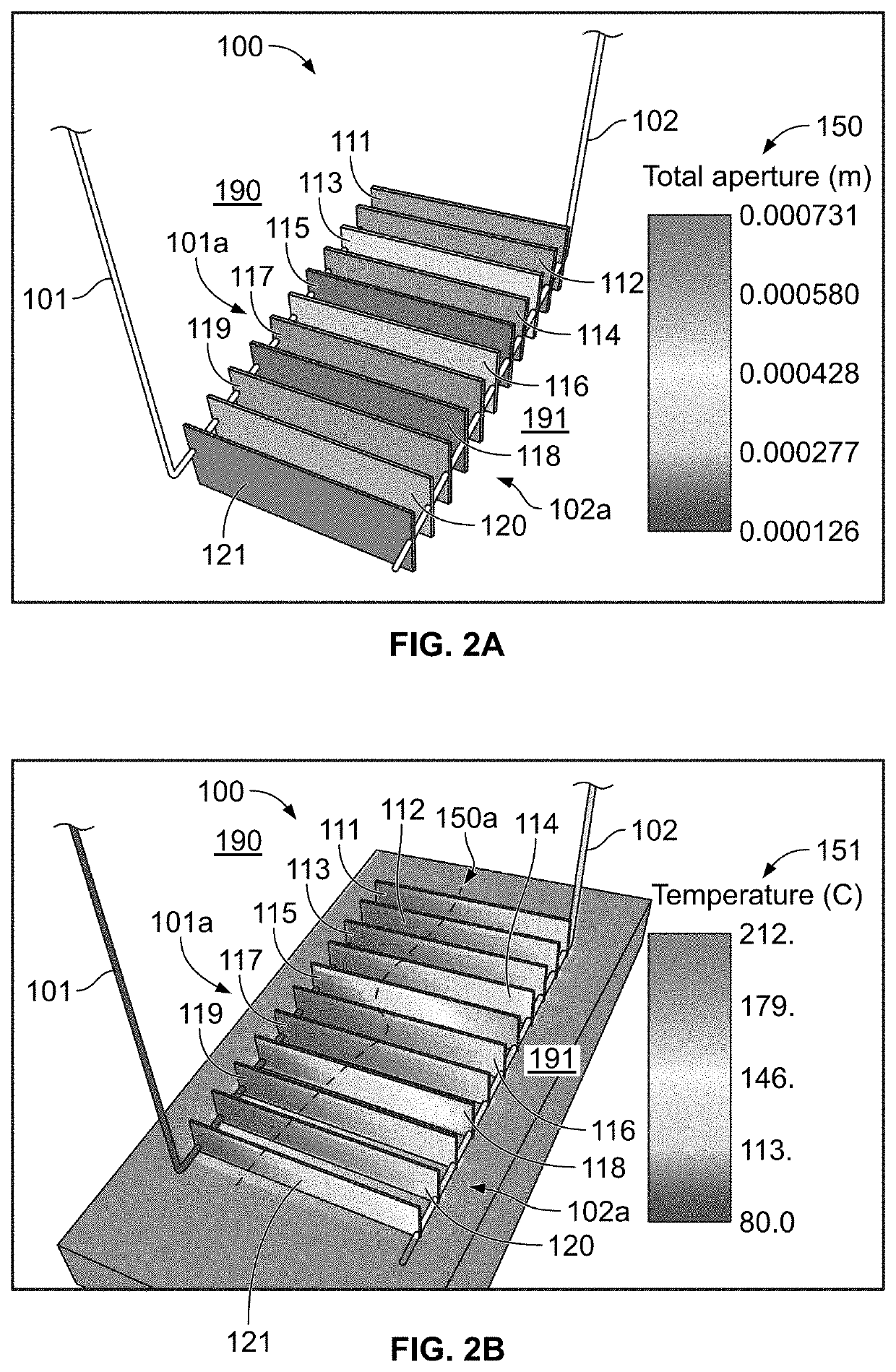Methods and systems to control flow and heat transfer between subsurface wellbores connected hydraulically by fractures
a technology of subsurface wellbore and hydraulic fracture, which is applied in the field of systems, methods and operations for enhancing the recovery of resources from within the ground, can solve the problems of thermal breakthrough and short-circuiting in geothermal energy systems, geothermal energy production, and failure to meet this long-standing need for clean energy production, so as to improve thermal sweep efficiency, and mitigate thermal
- Summary
- Abstract
- Description
- Claims
- Application Information
AI Technical Summary
Benefits of technology
Problems solved by technology
Method used
Image
Examples
example 1
[0170]Turning to FIG. 5, there is provided a graph 500 comparing the temperature profiles 501 of an LEP based geothermal system of the present invention against the temperature profile 502 of a conventional geothermal system, which is not based on LEP, over a 20-year period. For the conventional system, the pressure drop effects exhibits premature thermal breakthrough due to rapid cooling of high-permeability fracture pathways. Thus, as seen in the profile 502, the conventional system can lose about 20° C. over the first 1.25 years (˜10% reduction in temperature), and about 35° C. (˜18% reduction in temperature). In contrast, the case with active LEP tends to cool significantly slower because flow is distributed more evenly among the set of fractures connecting the injection and production wells. Thus, at year 1.25 the LEP system has a temperature drop if about 2° C. (˜1% reduction in temperature); and at year 2.5 the LEP system has a temperature drop of about 13° C. (˜7% reduction ...
example 2
[0173]Turning to FIG. 6, there is provided a perspective cross sectional view of an embodiment of an LEP geothermal system 600. The system 600 has an injection well 610 and a production well 615. The wells 610, 615 extend from the surface 602 of the earth 601, down into a formation 603, which has a pay zone 604. The injection well 610 has a heel 611 and a horizontal section 612, which is also the producing section. The producing section 612, has stages 613a, 613b, 613c, 613d, 613e. Each of these stages have different configurations of perforations, to address and level out the flow across the pay zone 604. Between the stages, the injection well has non-perforated sections 614a, 614b, 614c, 614d, 614e. The heel 611 is not perforated.
[0174]The system 600 has fracture zones 605a, 605b, 605c, 605d, 605e in the pay zone 604, of the formation 603, that provide fluid communication, e.g., flow, between the producing section 612 and the production well 615. One or more, and in embodiments al...
example 2a
[0179]In an embodiment of the system of Example 2, the flow rate for each of the stages has a difference from the flow rate of the other stages, that is smaller than about 15%, preferably smaller than about 10% and more preferably smaller than about 5%.
PUM
 Login to View More
Login to View More Abstract
Description
Claims
Application Information
 Login to View More
Login to View More - R&D
- Intellectual Property
- Life Sciences
- Materials
- Tech Scout
- Unparalleled Data Quality
- Higher Quality Content
- 60% Fewer Hallucinations
Browse by: Latest US Patents, China's latest patents, Technical Efficacy Thesaurus, Application Domain, Technology Topic, Popular Technical Reports.
© 2025 PatSnap. All rights reserved.Legal|Privacy policy|Modern Slavery Act Transparency Statement|Sitemap|About US| Contact US: help@patsnap.com



